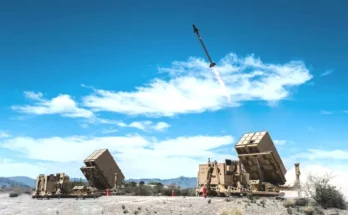Putting aside myriad development and deployment challenges, and whatever production delays the coronavirus pandemic may be about to cause, the F-35’s formidable technology investment can’t be denied. Not the least of the fighter’s technological advantages is its electronic warfare capabilities, principally the ASQ-239 EW suite.
Produced by BAE Systems, the fully integrated ASQ-239 provides broadband radar warning and geolocation, multispectral RF and IR countermeasures, and simultaneous jamming of surface and airborne threats.
In March 2019, new technology was incorporated into the ASQ-239 that reduced the footprint of the EW system with decreased volume and power requirements, while creating space for Block IV modernization upgrades. The system update is known as Digital Channelized Receiver/Techniques Generator and Tuner Insertion Program (DTIP) technology. It will help minimize the cost incurred for redesign work by addressing issues associated with manufacturing obsolescence.
As for that all-important platform, the Joint Strike Fighter is tailored to fall under one of three distinct design types: the F-35A Conventional Takeoff and Landing variant, the F-35B Short Takeoff and Vertical Landing variant, and the F-35C Carrier variant. The ASQ-239 equips all these aircraft for the U.S. Navy, Marine Corps, and Air Force as well as the armed forces of numerous allied nations.
In November 2018, prime contractor Lockheed Martin was awarded a $22.7 billion contract for the production and delivery of 255 F-35s. The U.S. Air Force has a total acquisition target of 1,763 F-35As. The U.S. Marine Corps plans to acquire 353 F-35Bs and 67 F-35Cs. The U.S. Navy intends to procure 273 F-35Cs.
Planned F-35 acquisitions for the international program partners are as follows: the U.K., 138 F-35s; Australia, 100 F-35As; Italy, 60 F-35As and 30 F-35Bs; Canada, 88 F-35As; Norway, 52 F-35As; the Netherlands, 46 F-35As; and Denmark, 27 F-35As. Current British plans call for all 138 of the U.K.’s aircraft to be F-35B STOVL variants.
The combined requirement for U.S. and international JSF purchases is a tall order for the makers of the aircraft’s electronic systems, but BAE Systems is well placed to provide the ASQ-239 and all its substantial support. In May 2018, the company won a five-year contract to maintain regional warehouses with on-hand inventories of critical EW components for the JSF program.
Andrew Dardine is lead analyst for Forecast International's Defense Electronic Systems group. He is the primary author of Forecast International's Electronic Warfare Forecast and co-author of Electro-Optical Systems Forecast and C4I Forecast. Andrew is also a regular contributor to FI's Defense & Security Monitor blog, offering insights into developing technologies such as directed-energy and next-generation jamming systems. His analysis of such vital market areas as EO/IR systems and electronic countermeasures technology has been cited in Defense News, Aerospace Daily, and Bloomberg Businessweek, among other news media. He has also written about the electronic defense market for Aviation Week and the Journal of Electronic Defense.





